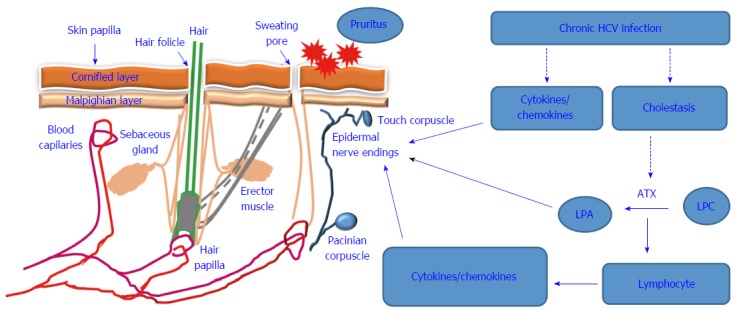Figure 1.

Proposed model for hepatitis C virus-induced pruritus. Chronic hepatitis C virus (HCV) infection can cause pruritus symptom by both direct and indirect mechanisms. The direct mechanisms include induction of pro-inflammatory cytokines and chemokines during the course of the chronic HCV infection. While the indirect mechanisms are associated with HCV-induced cholestasis leading to the accumulation of autotaxin (ATX) that is responsible for the conversion of the lysophosphatidic choline (LPC) into lysophosphatidic acid (LPA) that, in turn stimulates the epidermal nerve ending leading to the occurrence of pruritus symptom. Also, accumulated LPA can promotes the activation of lymphocytes for the production of pro-inflammatory cytokines and chemokines that, in turn stimulates the epidermal nerve ending leading the occurrence of pruritus symptom.
